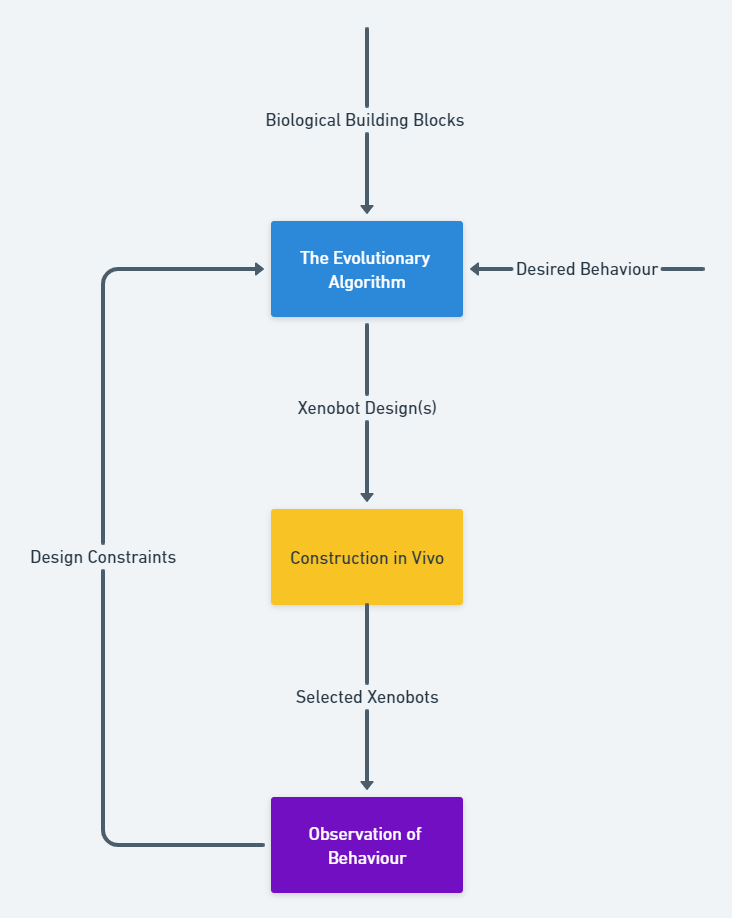Xenobots: The Revolutionary Living Machines Designed by AI
Written on
Introduction to Xenobots
In late 2019, a team of researchers—Sam Kriegman, Douglas Blackiston, Michael Levin, and Josh Bongard—released a groundbreaking paper titled “A scalable pipeline for designing reconfigurable organisms.” This research introduced an innovative lifeform called Xenobots, crafted from stem cells sourced from the African clawed frog (Xenopus laevis). These lab-generated beings exhibit remarkable abilities such as movement, teamwork, object manipulation, and even self-repair. A few years later, the same team unveiled Xenobots that can reproduce through a mechanism known as kinematic self-replication in their subsequent study.

The Potential of Xenobots
While current applications for Xenobots are limited, the researchers believe that further advancements could unlock a myriad of possibilities. Future uses may include targeted drug delivery within the human body, microplastic removal from oceans, and cancer cell identification, among others.
The Process of Creation
Crafting Xenobots is a complex and extensive procedure. Researchers start by defining a desired behavior for the Xenobots. For example, a common goal is to maximize displacement, prompting the Xenobots to travel as far as possible from their starting points in a petri dish filled with liquid. They also select biological building blocks for the Xenobots. Cardiac progenitor cells, which develop into heart muscle cells, and pluripotent stem cells, used for creating skin and muscle tissues, serve as the foundational elements.
These specifications are input into an evolutionary algorithm coupled with physics simulation software. In this simulation, biological components are represented as colored cubes—cyan for skin/passive tissue and red for muscle tissue. The evolutionary algorithm organizes these blocks into various Xenobot designs, determining the timing for muscle contractions. Each design undergoes testing in the physics simulation to assess its performance relative to the intended behavior, receiving a performance score that informs subsequent modifications by the AI.

Due to the significant computational demands of running the evolutionary algorithm, the team utilized the DeepGreen supercomputer at the Vermont Advanced Computing Centre. Once optimal designs are determined, they are constructed in vivo using a specialized toolkit that employs microsurgery tools and cautery electrodes.

The final step involves observing the behaviors of these in vivo-created Xenobots and comparing them with their simulated versions. This feedback loop allows researchers to refine future designs based on the performance of existing ones. The entire design and manufacturing process can be visually summarized in a flow chart.

Capabilities and Innovations
Xenobots are equipped with capabilities that extend beyond mere locomotion. By incorporating cavities within their structure, the researchers enabled them to store and transport objects. Experiments demonstrated that more intricate Xenobot shapes can effectively move items, a crucial attribute for potential applications. Moreover, Xenobots can collaborate in teams to clear debris from designated areas. Notably, they possess the remarkable ability to heal when injured, highlighting their biological nature as opposed to synthetic alternatives.
Xenobots 2.0: The Self-Replication Breakthrough
In 2021, the researchers achieved a significant milestone by enabling Xenobots to reproduce through kinetic self-replication. Unlike traditional lifeforms that require growth to reproduce, Xenobots can replicate without this necessity, marking a notable advancement in biological engineering. Initially, stem cells from Xenopus frogs were placed in a saline solution, leading them to cluster into spheroid forms over several days. These clumps developed cilia independently, allowing them to navigate their environment and produce progenitors. These progenitors were then placed in a solution rich in stem cells, facilitating the formation of a new generation of spheroid Xenobots.
However, reproduction diminished in subsequent generations, with a maximum of only two generations being created before halting. To enhance this process, the researchers turned to the evolutionary algorithm to design progenitors that could yield the most generations. The semi-torus "C"-shaped Xenobot emerged as the most effective progenitor, producing four generations before ceasing.

Conclusion
The exploration of Xenobots signifies a remarkable intersection of biology and technology, with the potential to revolutionize various fields. As research progresses, the capabilities of these living machines may expand beyond our current imagination.
Video: Xenobots: Building the First-Ever Self-Replicating Living Robots - Discover the creation and potential of these remarkable living machines.
Video: Meet the Xenobot, the World's First-Ever "Living" Robot - A closer look at the world's first living robots and their groundbreaking functions.